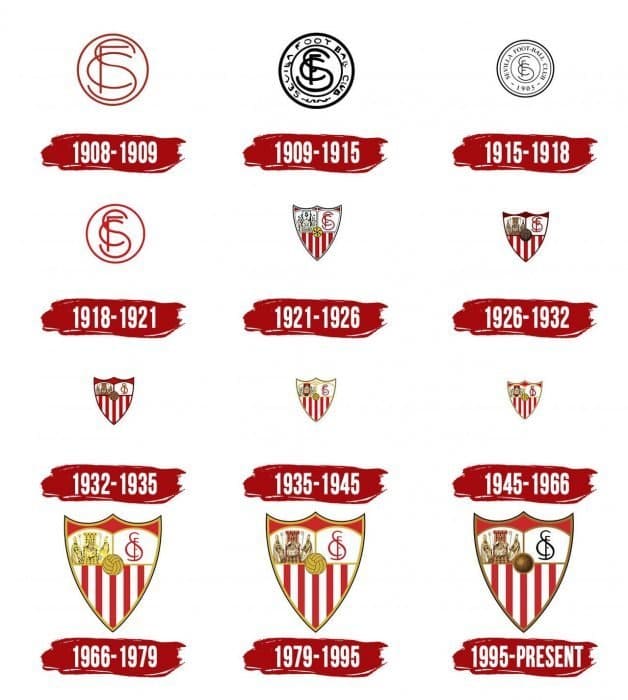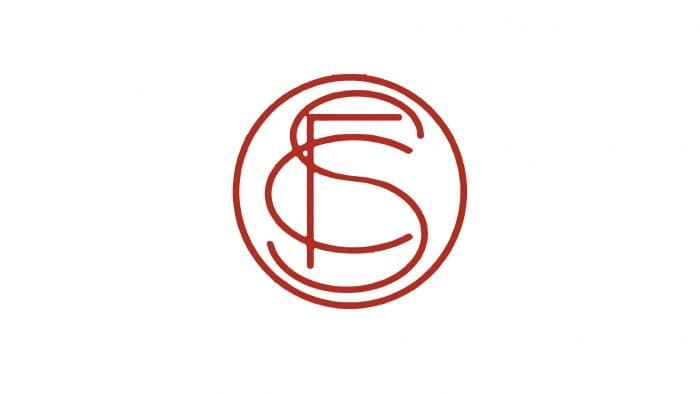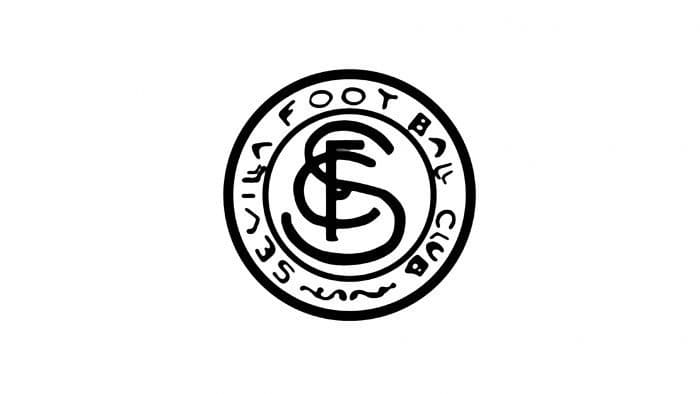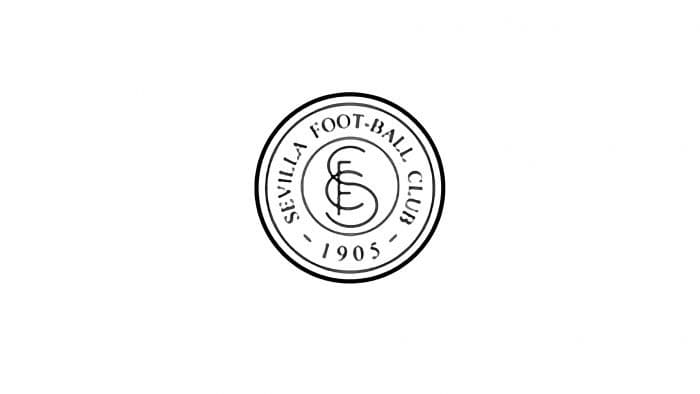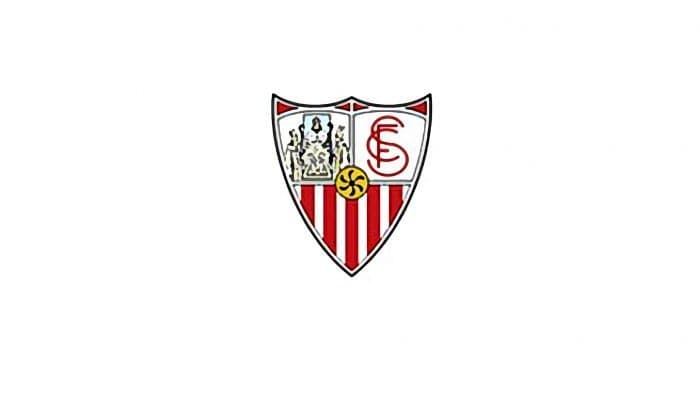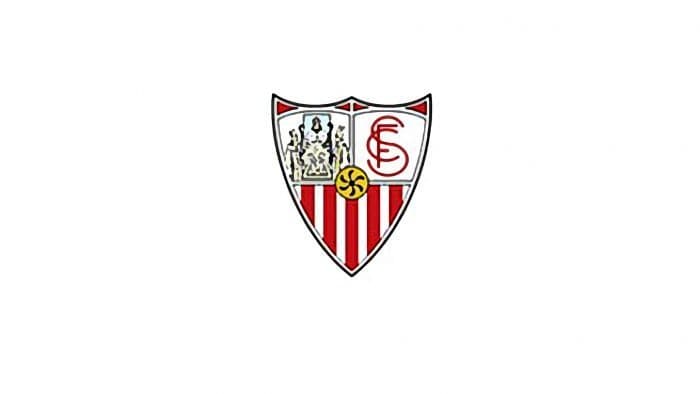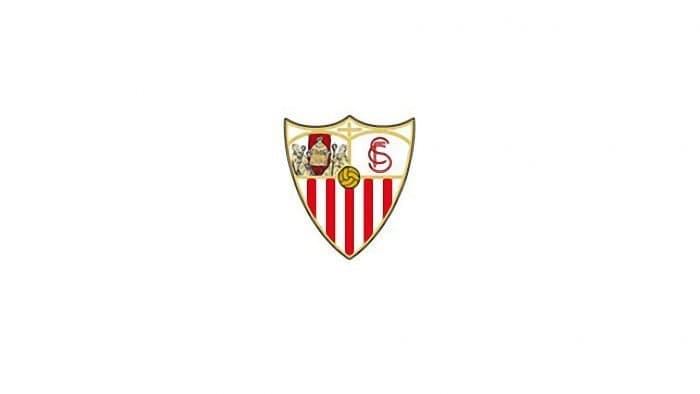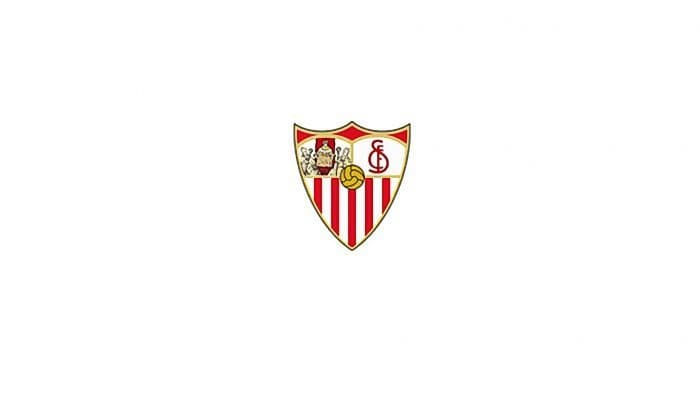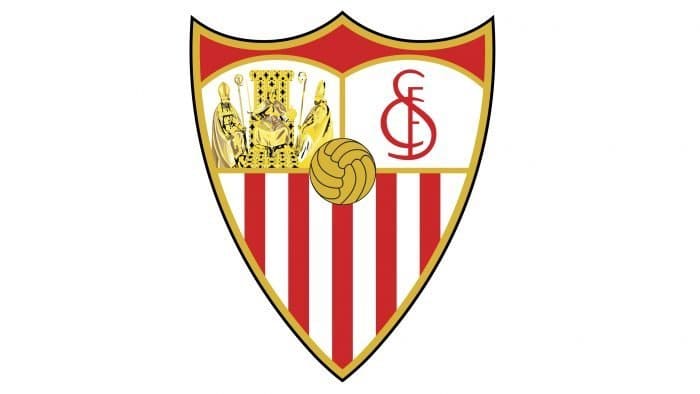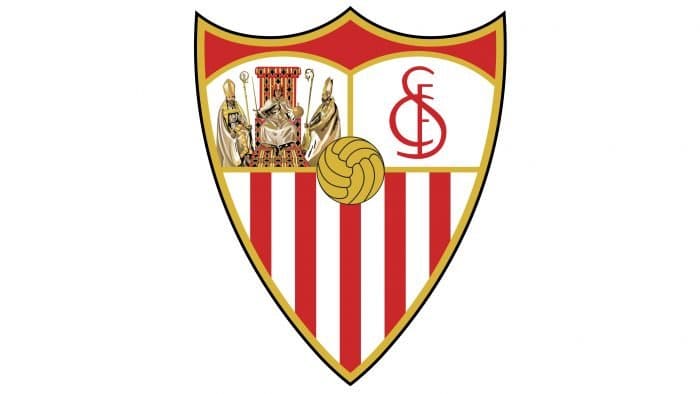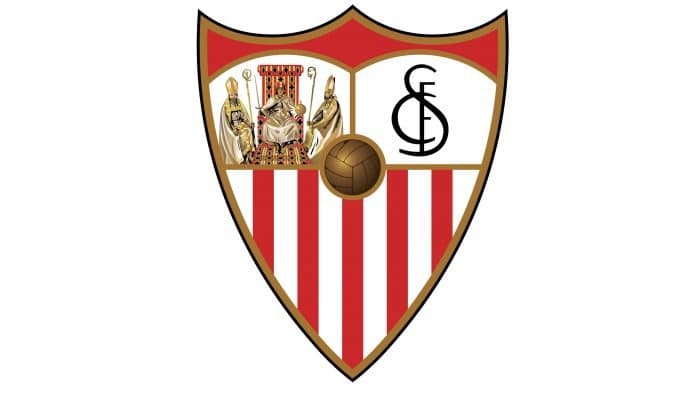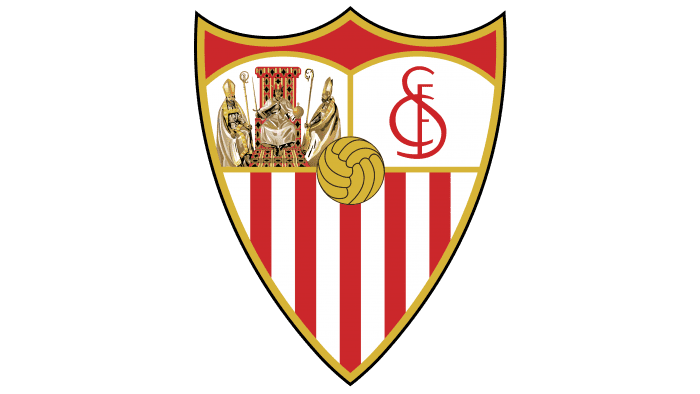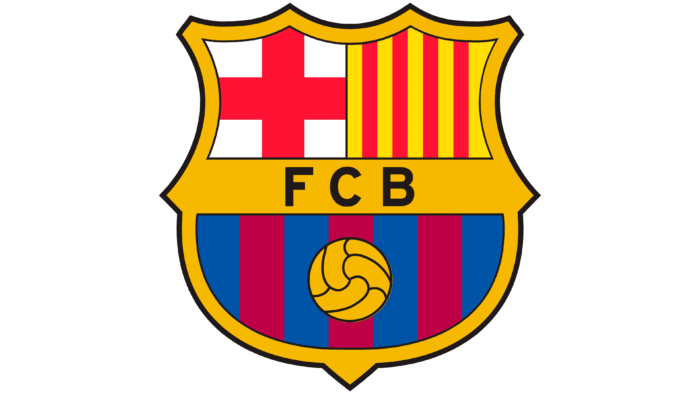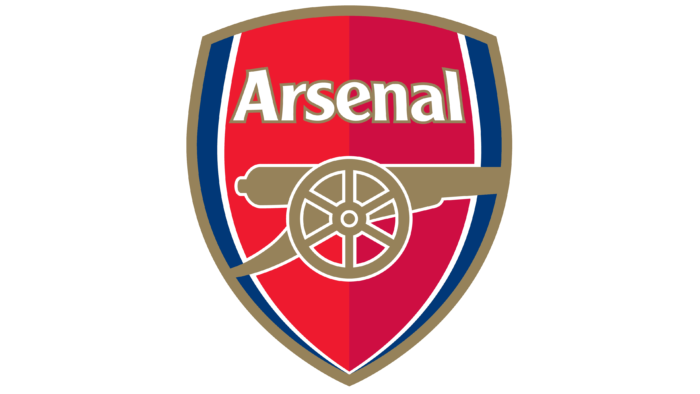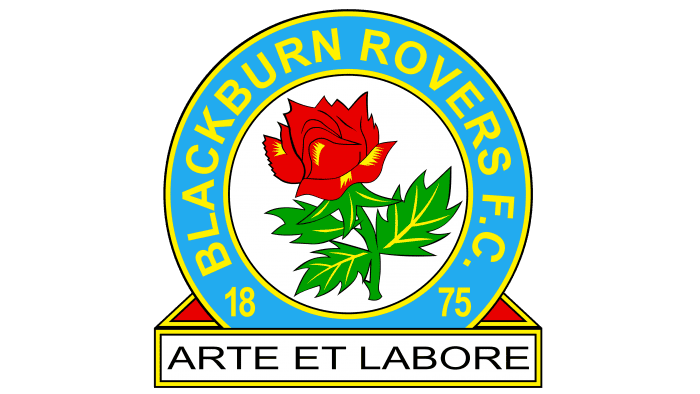The “Sevilla” logo shows that the athletes take their duty to represent their hometown seriously. It reflects elements of the region’s cultural heritage and its heroic history. The unique charm of the emblem attests to the high status of the football club.
Sevilla: Brand overview
| Founded: | 25 January 1890 |
| Founder: | Sevillistas de Nervión S. A. |
| Headquarters: | Seville, Spain |
| Website: | sevillafc.es |
The heraldic emblem, logo, and corporate identity of “Sevilla” reflect a commitment to the history of the region. A distinctive feature of the graphic design is the use of a football as the key figure of the entire composition, reminding of the affiliation with the sports club.
Meaning and History
The Trinity is the main element of the city coat of arms of Sevilla. In the center of the image, we see Ferdinand III, the King of Castile, sitting on the throne with a sword. In 1248, he liberated the city from the Moors. On the sides stand archbishops Isidor and Leander of Seville. These are the largest Spanish church figures of the 6th-7th centuries, also present on Sevilla’s emblem.
The ball serves as a kind of “rivet” that fastens all parts of the logo composition and also reminds that the emblem of “Sevilla” belongs to a football club.
The vertical red and white stripes have the colors of the flag of Castile, under which Ferdinand III’s Christian army besieged Muslim Sevilla.
The current emblem of “Sevilla” is created in the form of a triangular (heart-shaped) heraldic shield, divided into three sectors with golden fields. This version was developed back in 1922 and has not undergone significant changes since.
The intertwined abbreviation SFC (Sevilla Futbol Club) was the main element of the old emblem, existing from 1905 to 1922. It lost size but retained its previous appearance and was placed in the top right corner of the new emblem.
What is Sevilla?
“Sevilla” is the oldest Spanish professional football club, founded in 1890 by Edward Farquharson Johnston. It is currently owned by Sevillistas de Nervion S.A. The team is based in Sevilla, Andalusia, and is part of the country’s top sports division, La Liga. The team has been crowned the UEFA Europa League champion six times, outperforming its competitors. The home arena is the “Ramon Sanchez Pizjuan” stadium.
1908 – 1909
“Sevilla” was the first football club in Spain. It was founded in 1890 but was not immediately registered, so for 15 years, the footballers did not have their emblem. The team’s distinctive symbolism only appeared in the 1900s. It was the initial letters of the name Sevilla Football Club, represented as a monogram inside a white circle with a red outline. The combination of white and red colors corresponded to the club’s color scheme. The emblem with initials was used periodically until 1921 in various forms. It last returned to the players’ uniform in 2013.
1909 – 1915
Along with the main emblem, there was a black and white version, complemented by a ring with the inscription “SEVILLA FOOTBALL CLUB.” It never appeared in matches and was used only in an administrative context. Initially, the team’s name was illegible; it seemed that the printed letters were handwritten.
1915 – 1918
Over time, designers made the emblem neater. They aligned the monogram in the center, rewrote the phrase “SEVILLA FOOT-BALL CLUB” in a stencil font with serifs, and placed the year of the team’s official registration – 1905 – at the bottom. As a result, the image began to resemble a stamp.
1918 – 1921
Until 1921, the club’s very first emblem – a red monogram on a white circle – continued to be used. The proportions of the letters changed slightly: they became more compact and centered.
1921 – 1926
In 1921, “Sevilla” got a new logo. The team leaders could have chosen a version inspired by Barcelona’s symbolism, but they preferred another option: a heraldic shield reflecting the city’s heritage. In the left part of the shield (at the top), three saints were depicted. In the right corner were the team’s initials as the well-known monogram. The bottom half of the emblem was occupied by 11 red and white stripes, and above them, right in the center, was a football resembling a circle with a six-pointed swastika.
1926 – 1932
Artists added details to the image of the three canonized elders, bringing more color to it. Additionally, they refreshed the ball and changed the bright red shade to a darker, almost burgundy color.
1932 – 1935
The “windows” with the three saints and the monogram were reduced in size, which elongated the red and white lines. The shade of red changed again: in the new version, it was closer to scarlet. The ball also looked different: now its surface clearly showed six elongated stripes.
1935 – 1945
The following changes affected almost all elements:
- A yellow dividing line appeared between the three shield segments, forming a cross at the top.
- The image of the saints was simplified: this time, designers avoided detailed drawings.
- The football changed from brown to bright yellow.
1945 – 1966
The logo creators removed the cross. The upper part of the shield became red again, as it was before 1935.
1966 – 1979
Detailed design replaced minimalism: the canonized elders were depicted quite in detail. At the same time, there was more goldish-yellow color than in previous versions.
1979 – 1995
In the new version of the emblem, designers reduced the amount of yellow color. This allowed the figures of the saints to be made more colorful and realistic.
1995 – today
In 1995, the golden color was replaced with brown. The red monogram in the top right corner of the shield turned black.
Sevilla: Interesting Facts
Sevilla FC is an old and successful soccer team from Spain.
- Starting Out: Sevilla FC was created on October 14, 1905. They’ve been a big part of Spanish soccer ever since, helping the sport grow in Spain.
- Europa League Stars: They’ve won the UEFA Europa League, a big European soccer tournament, more times than any other team. Their wins in 2006, 2007, 2014, 2015, 2016, and 2020 have made them super famous in this competition.
- La Liga Success: Sevilla FC won Spain’s top soccer league, La Liga, once in the 1945-1946 season. They’re always one of the top teams, fighting for the best spots and playing in European tournaments.
- Their Stadium: Their home is called Estadio Ramón Sánchez-Pizjuán, named after a past president. Since its opening in 1958, it’s known for being a loud and exciting place thanks to its passionate fans.
- Big Rivalry: They have a huge rivalry with Real Betis. Their matches, known as “El Gran Derbi,” are a big deal, showing off the city’s love for soccer and the cultural importance of this rivalry.
- Training Young Players: Sevilla FC is good at training young soccer players in their academy, “La Cantera.” Many have gone on to be stars in Spain and other countries.
- Famous Players: Some big-name players have played for Sevilla FC, like Jesús Navas, who has played the most games for the club, and Frédéric Kanouté, one of their top scorers.
- Copa del Rey Wins: Several times, they’ve won the Copa del Rey, a knockout soccer tournament in Spain. These wins have added to their trophy collection and reputation as a top team.
- Smart Management: Sevilla FC is known for being smart about picking and training players without spending much money. This approach has helped them do well, thanks to people like Monchi, who’s great at finding new talent.
- Playing in Europe: Apart from doing well in Spanish competitions, Sevilla FC has also shown that it wants to be among the best in Europe by playing in the UEFA Champions League against some of the biggest teams.
Sevilla FC’s long history, recent wins, and enthusiastic fans show why they’re such an important and beloved soccer team in Spain and Europe.
Font and Colors
An important part of the emblem is the image of the three saints. In the center, on a high throne, sits Ferdinand III of Castile – one of the most significant kings in Spanish history, canonized in 1671. To the left is Isidore of Seville, an archbishop and miracle worker who was canonized in 1598. To his right sits his predecessor and brother – Leander of Seville.
The logo does not contain any inscriptions, except for the old monogram, which appeared back in 1908 – 18 years after the club was founded. The letters do not correspond to any existing fonts, as the developers created them specifically for “Sevilla.”
The elements of the shield are colored in the team’s official colors: white (#FFFFFF) and red (#F43333). It is believed that they are linked to the royal standard of Ferdinand III. The color palette of the emblem includes gold (#C79100) and black (#000000).
Sevilla color codes
| Red | Hex color: | #d70f21 |
|---|---|---|
| RGB: | 215 15 33 | |
| CMYK: | 0 93 85 16 | |
| Pantone: | PMS Bright Red C |
| Gold | Hex color: | #c79100 |
|---|---|---|
| RGB: | 199 146 0 | |
| CMYK: | 0 27 100 22 | |
| Pantone: | PMS 7550 C |
| Black | Hex color: | #000000 |
|---|---|---|
| RGB: | 0 0 0 | |
| CMYK: | 0 0 0 100 | |
| Pantone: | PMS Process Black C |

